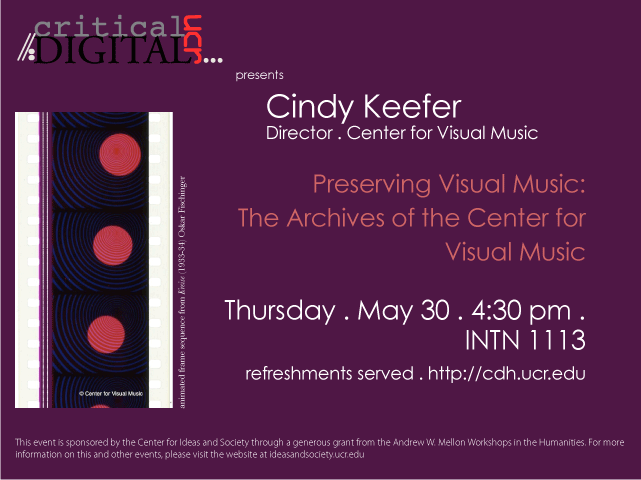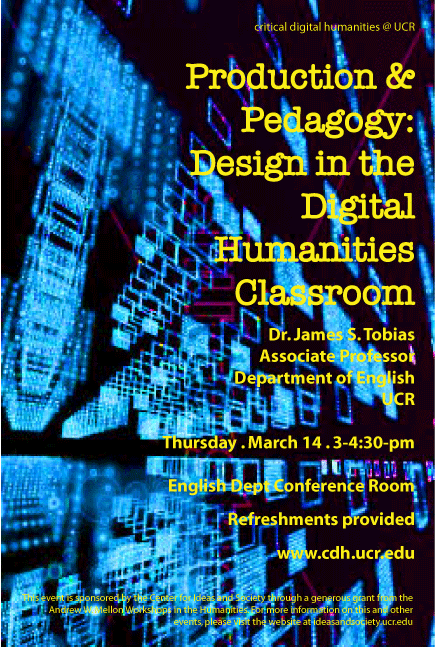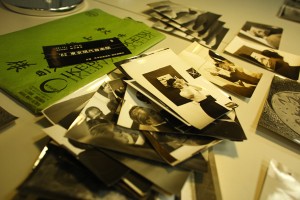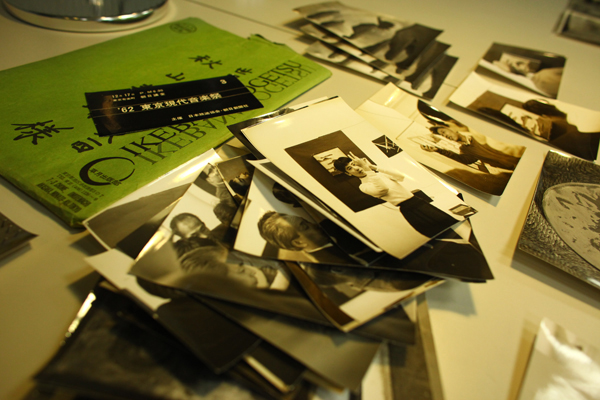Critical Digital Humanities is proud to announce that we have again received a Mellon Workshop Grant for the upcoming 2013-2014 academic year!
The UCR Center for Ideas and Society has been instrumental in providing access to these Mellon Workshop Grants, and we greatly appreciate their efforts.
For our third consecutive year Critical Digital Humanities is looking forward to more exciting workshops and presentations with scholars and artists from a variety of fields.
The workshop theme for this year is, “Identity and Sociality in the Networked Public Sphere,” and we will hold events beginning in the fall.
Please join us for the Year-End Colloquium for Graduate Students in “BAM.”
Designated Emphasis in Book, Archive, and Manuscript Studies – http://bam.ucr.edu
Friday, June 7, 10:00am to Noon
English Department Conference Room (HMNSS 2212)
Presentations by Steve Anderson, Cori Knight, and Heather Van Mouwerik
Display of printshop projects by Rebecca Addicks, Ann Garascia, Cori Knight, Jessica Roberson, and Anne Sullivan
This will also be a celebration of the new Mellon Workshop Grant awarded to the Material Cultures of the Book Working Group – http://bookhistory.ucr.edu
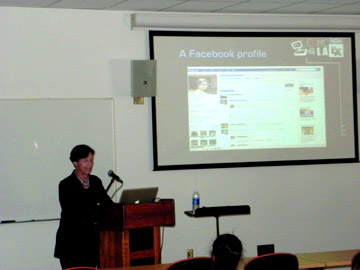 On February 22, 2012, Dr. Patricia Greenfield, Distinguished Professor of Psychology at UCLA and Director of the Children’s Digital Media Center@Los Angeles, presented a talk titled Media, Self, and Relationships. Focusing on her research into the ways on-line social media networks affect the nature of interpersonal relationships through technicization, Greenfield presented data indicating that the concepts of friendship and relationship shift in definition from private activities to public performances. Connected to a larger body of research on human development and social change, Dr. Greenfield posits that detailed analysis of the larger effects of social media ecologies on the way various communities develop value systems and deploy those values as ethics.
On February 22, 2012, Dr. Patricia Greenfield, Distinguished Professor of Psychology at UCLA and Director of the Children’s Digital Media Center@Los Angeles, presented a talk titled Media, Self, and Relationships. Focusing on her research into the ways on-line social media networks affect the nature of interpersonal relationships through technicization, Greenfield presented data indicating that the concepts of friendship and relationship shift in definition from private activities to public performances. Connected to a larger body of research on human development and social change, Dr. Greenfield posits that detailed analysis of the larger effects of social media ecologies on the way various communities develop value systems and deploy those values as ethics.
Greenfield’s research is grounded in empirical studies of teens and college students active on social media sites like MySpace, when it was more widely used, and eventually Facebook, as it became the site of preference. She specifically noted the ways in which relationships that historically may have been considered “private” are “performed” for an audience of “friends.” Her research further redefines the term “friend” in terms of social networks as broadly including people who are
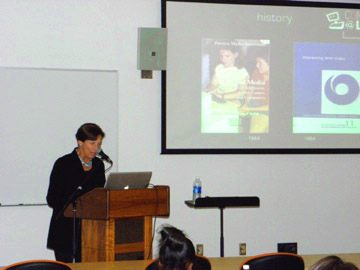
known less intimately and more as a result of dispersed networks of assoiciation, including friends of friends, and persons who would traditionally been considered “neighbors” or “acquaintences.”
The shifts occuring in these networked, distributed relational contexts bear upon the ways in which relationships are navigated in terms of public performance for an audience of invisible friends, newly defined in online social network contexts. As a result, further research is addressing questions of celebrity and performance, the valuation of fame, and the parameters of intimacy in terms of public performance.
Patricia Greenfield, Ph.D., is author of Mind and Media: The Effects of Television, Video Games, and Computers (1984), subsequently translated into nine languages; coeditor of Effects of Interactive Entertainment Technologies on Development (1994); coeditor of Children, Adolescents, and the Internet: A New Field of Inquiry in Developmental Psychology (2006); and coeditor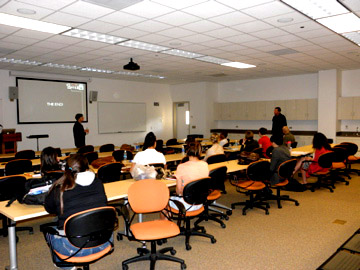 of Social Networking on the Internet: Developmental Implications (2008). Her empirical research on the developmental implications of interactive media has included action video games, massive multiplayer online role-playing games, teen chat rooms, and social networking sites.
of Social Networking on the Internet: Developmental Implications (2008). Her empirical research on the developmental implications of interactive media has included action video games, massive multiplayer online role-playing games, teen chat rooms, and social networking sites.
Greenfield has held residential fellowships at Harvard University, Stanford University, and the School for Advanced Research on the Human Experience in Santa Fe. She is a recipient of the American Association for the Advancement of Science Award for Behavioral Science Research. In 2010 she received the Bronfenbrenner Award for Lifetime Contribution to Developmental Psychology in the Service of Science and Society from the American Psychological Association.
UCR ARTSblock presents the exhibition:
Geographies of Detention: From Guantánamo to the Golden Gulag
June 1 – September 7, 2013*
California Museum of Photography, UCR ARTSblock
UCR ARTSblock presents Geographies of Detention: From Guantánamo to the Golden Gulag, on view at the California Museum of Photography from June 1 through September 7, 2013. The exhibition is guest curated by Catherine Gudis, Molly McGarry, and graduate students from the UCR Public History Program: Leann Do, Jay Hartzell, Kristen Hayashi, Corinne Knight, Sean Milanovich, Karen Raines, Carolyn Schutten, Megan Suster, Jennifer Thornton, David Wagner, and Jennifer Weed.
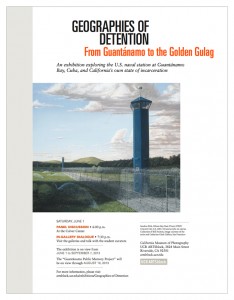 Presented on two floors of the California Museum of Photography, Geographies of Detention offers a nuanced investigation into incarceration and its architectures. One portion of the exhibition highlights work by artists Sandow Birk, Alyse Emdur, and Richard Ross, each of whom explores different aspects of imprisonment. Geographies of Detention also includes the traveling exhibit the “Guantánamo Public Memory Project,” an examination of the over 100-year history of the US naval station at Guantánamo Bay, Cuba.
Presented on two floors of the California Museum of Photography, Geographies of Detention offers a nuanced investigation into incarceration and its architectures. One portion of the exhibition highlights work by artists Sandow Birk, Alyse Emdur, and Richard Ross, each of whom explores different aspects of imprisonment. Geographies of Detention also includes the traveling exhibit the “Guantánamo Public Memory Project,” an examination of the over 100-year history of the US naval station at Guantánamo Bay, Cuba.
The main gallery of the museum is devoted to the contemporary context and landscape of California’s own “golden gulag.” Prison populations in California have grown 500% in the last decades even as crime rates subside, and prison spending continues to outweigh state funding for public education. A selection of hauntingly evocative paintings by Sandow Birk from his series “Prisonation” (2001) reflects on the growth of California’s prison industrial complex by engaging its geographic context. Taking inspiration from pictorial genres of landscape painting, including those popularized by the Hudson River School in the 19th century, each of Birk’s paintings depicts one of California’s state prisons, from Pelican Bay in Northern California to Centinela State Prison at the US–Mexico border.
While Birk’s work shows the prisons from afar, Richard Ross and Alyse Emdur take the viewer inside these structures. In his series of photographs “Architecture of Authority” (2007), Ross explores the built environment of prisons, revealing the spatial logic used to exert power over the bodies incarcerated within. Emdur’s large-scale photographs of prison visiting rooms and collected letters and snapshots (some of which appear in her 2013 book, Prison Landscapes) offer a more intimate vision of inmates posing with their visitors against murals in fantasy landscapes of freedom. Presented together, the works of Birk, Ross, and Emdur meditate on the “carceral state” of California.
The “Guantánamo Public Memory Project” combines historical and contemporary photography, film, and first-person audio interviews to examine how the naval base has been “closed” and reopened for more than a century leading up to the attacks on September 11, 2001. These new perspectives on Guantánamo’s history as a “legal black hole” provoke discussions about the limits of democracy and the meaning of mass incarceration in a global present and future.
Collaboratively curated by eleven universities (including UCR), the “Guantánamo Public Memory Project” is comprised of a deeply researched traveling exhibit, as well as a website (www.gitmomemory.org), blog, and ongoing public conversation. The panel produced by graduate students in UCR’s Public History Program examines Guantánamo as an international symbol of America’s War on Terror and a lightning rod for debates about torture, detention, national security, and human rights.
Visit artsblock.ucr.edu for the schedule of related programs.
*The “Guantánamo Public Memory Project” will be on view as part of Geographies of Detention through August 10, 2013.
This exhibition was made possible in part by the generous support of Dean Stephen Cullenberg, UCR College of Humanities, Arts, and Social Sciences, and the UCR History Department’s Friends of Public History.
California Museum of Photography Sweeney Art Gallery
Culver Center of the Arts University of California, Riverside
3834 Main Street Riverside, CA 92501 951.827.3755
Cindy Keefer, Archivist, Curator & Director . Center for Visual Music
Preserving Visual Music : The Archives of the Center for Visual Music
THURSDAY . May 30 . 4:30 PM . INTN 1113 . Refreshments served .
Cindy Keefer, Director of the Center for Visual Music Los Angeles, will discuss and screen work by pioneers of kinetic art, abstract animation and pre-digital cinema from CVM’s archives. CVM is a Los Angeles archive dedicated to visual music, experimental animation and abstract media. CVM preserves and promotes films by Oskar Fischinger, Jordan Belson, Charles Dockum, Mary Ellen Bute, Jules Engel, Harry Smith and others, as well as contemporary artists. Keefer will screen work from CVM’s archives by Fischinger and Belson, plus Dockum’s Mobilcolor Projections, Bute’s Abstronics (an early oscilloscope film), a short Bute documentary, and more. She will also discuss Belson’s now legendary 1950s Vortex Concerts, CVM’s work with the Fischinger legacy, current preservation work, and Raumlichtkunst, the new HD 3-screen reconstruction of Fischinger’s 1920s multiple-projector performances, recently exhibited at the Whitney Museum, the Tate Modern, and scheduled for exhibition at the Palais de Tokyo in Paris in summer 2013.
This is the last event CDH will host for the 2012-2013 season. Please join us for this exciting presentation.
http://www.dichtung-digital.
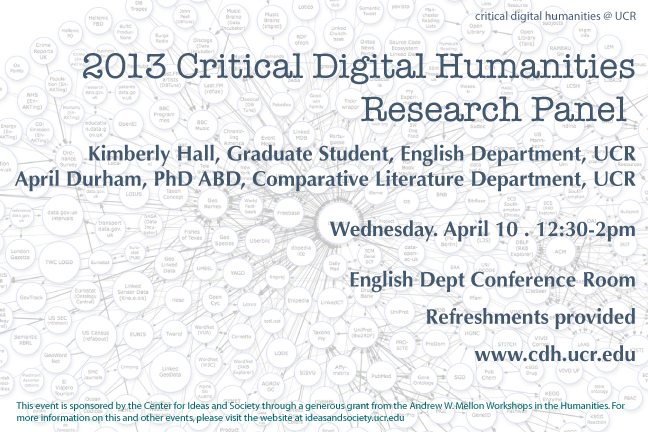 The Critical Digital Humanities presents a CDH research panel with presentations by April Durham and Kimberly Hall. They will present drafts of recent research in digital humanities for discussion and comment.
The Critical Digital Humanities presents a CDH research panel with presentations by April Durham and Kimberly Hall. They will present drafts of recent research in digital humanities for discussion and comment.
Wednesday . April 10 . 12:30 – 2
English Department Conference Room
Refreshments will be served.
CDH event with media artist and scholar, Kristy Kang
The Seoul of Los Angeles: Contested Identities and Transnationalism in Immigrant Space
Thursday, April 4th at 3pm
Room: INTS 1113
Refreshments provided.
A presentation of interdisciplinary work in the digital humanities that explores narratives of identity formation and cultural memory.
Ms. Kang is an internationally recognized artist and has served as researcher, project director, and designer on a range of collaborative projects at the Labyrinth Project at USC.
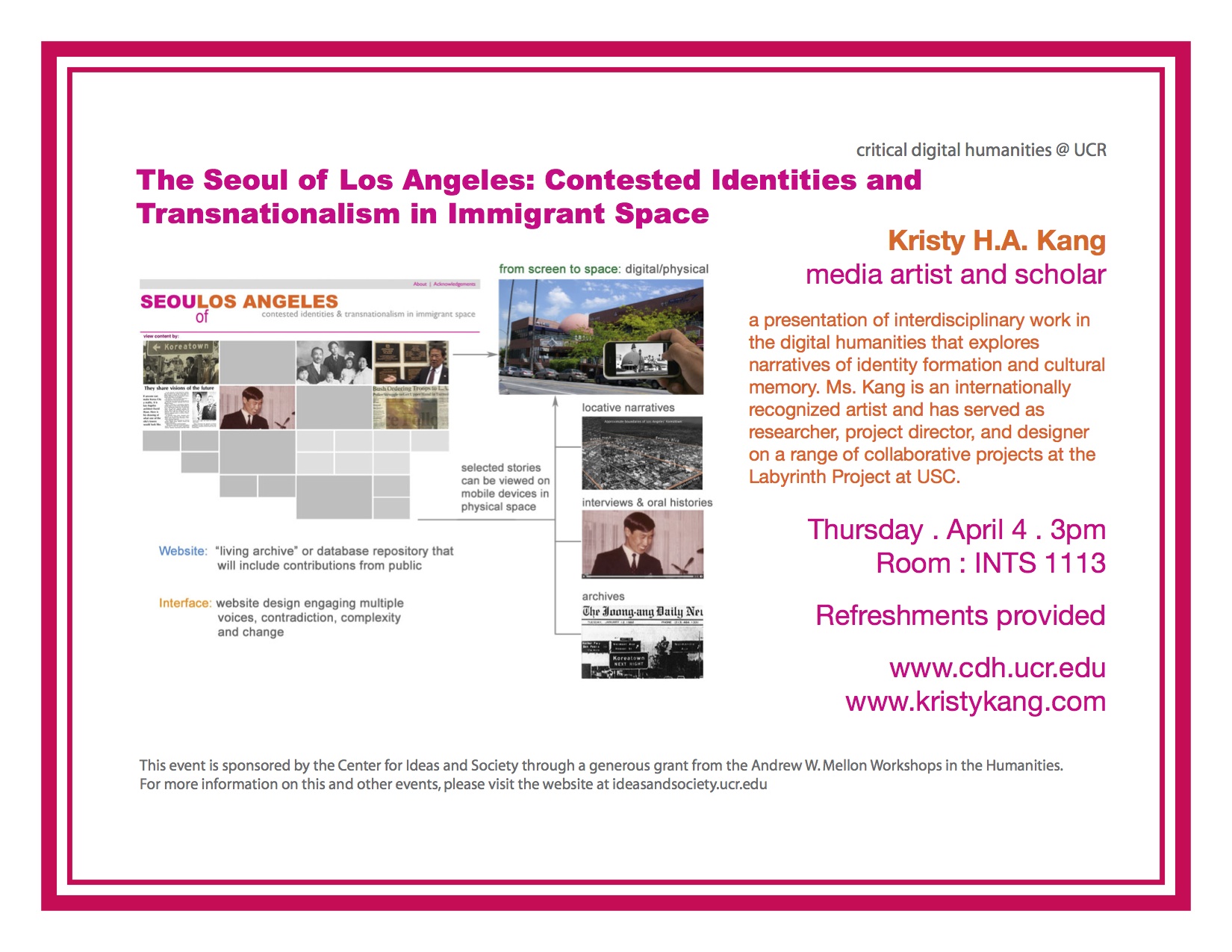
This event is sponsored by the Center for Ideas and Society through a generous grant from the Andrew W. Mellon Workshops in the Humanities. For more information on this and other events, please visit ideasandsociety.ucr.edu
New CDH Talk : Production & Pedagogy with Professor James S. Tobias
February 25th, 2013
April Durham
Production and Pedagogy: Design in the Digital Humanities Classroom
Dr. James S. Tobias . Associate Professor . Department of English . UC Riverside
Thursday . March 14 . 3-4:30 pm . English Department Conference Room
Refreshments provided.
This event is sponsored by the Center for Ideas and Society through a generous grant from the Andrew W. Mellon Foundation. For more information on this and other events, please visit the website at ideasandsociaty.ucr.edu
The Museum of Modern Art launches post, a participatory digital platform for global research
February 20th, 2013
April Durham
The Museum of Modern Art launches post,
a participatory digital platform for global research
post.at.MoMA.org The Museum of Modern Art (MoMA) is pleased to announce the launch of post: notes on modern and contemporary art around the globe, an online initiative for collaborative research and artistic exchange. post grows out of C-MAP (Contemporary and Modern Art Perspectives), a cross-departmental research program begun in 2009 to facilitate a museum-wide study that reflects the multiplicity of “modernities” and histories of contemporary and modern art.post is a site for encounters between the established and the experimental, the historical and the emerging, the local and the global, the scholarly and the artistic, the formal and the informal. Adapting the attributes of an online journal, archive, exhibition space, and social-networking platform, post uses the non-hierarchical characteristics of the Web to spark in-depth explorations of the ways in which modernism is being redefined, and to link those topics to the ways in which artists and institutions are working today.
post is an open forum for sharing research and circulating works in progress, offering a platform for critical response and an instrument for increasing expertise through exposure to ideas from around the globe. It is a place for conversation and debate, for building a nuanced understanding of the histories that shape our present. As a Web platform, post provides an alternative to the model of a unified art-historical narrative. post instead allows a malleable, layered understanding of multiple notions of modernity to emerge over time, as more people from more places participate.
Emerging out of research undertaken at MoMA, post develops a network of partners and users whose complementary research and concerns will shape future approaches and content. Starting with a specific thematic focus, the site regularly releases essays, interviews, reports, reflections, archival materials, and artists’ commissions, ensuring that new voices are constantly entering the discussion. The site is designed to encourage active participation; users and institutional partners are encouraged to upload their own findings and share their questions, together gaining broader exposure and expertise. In time, and depending upon the interest of the partners, post will broaden its focus.
Committed to investigating artistic practices that have historically been overlooked in MoMA’s collection and exhibitions, post initially explores sites of experimental practices in regions that are the focus of C-MAP research: East Asia, Central and Eastern Europe, and Latin America and the Caribbean. Upon its launch, post will present its first case study, in partnership with Keio University Art Center, featuring the archival materials of Sogetsu Art Center, an epicenter of avant-garde artistic experiments in Tokyo in the 1960s that hosted an exciting, rapid-fire series of programs in experimental music, jazz, and cinema. The initial presentation features essays, interviews, and works by artists related to Sogetsu Art Center—Shiomi Mieko, Yokoo Tadanori, Matsumoto Toshio, andYamaguchi Katsuhiro—and artists who have been the subject of C-MAP research—Geta Brătescu, Chim↑Pom, and Jikken Kobo, among others.
About C-MAP
C-MAP research questions the judgments that grow out of the assumption that artistic modernism is or was determined solely by Western European and North American narratives of early-20th-century avant-gardes. The aim of C-MAP is to understand more fully the historical imperatives and changing conditions of transnational networks of artistic practice, and to seek verbal and material accounts of histories that are little known outside their countries of origin. C-MAP forges new relationships and partnerships and undertakes collaborative research in order to develop new expertise, share what has been learned, and, ultimately, inform the development of exhibitions, publications, educational programs, and MoMA’s collection for the benefit of scholars, curators, educators, students, critics, artists, and the general public.
The Museum of Modern Art’s Contemporary and Modern Art Perspectives in a Global Age Initiative (C-MAP) is supported by The Andrew W. Mellon Foundation and The International Council of The Museum of Modern Art.
Additional funding is provided by Patricia Phelps de Cisneros, Adriana Cisneros de Griffin, and Marlene Hess.
post was designed and developed by TC Labs. Creative direction by Caleb Waldorf.

